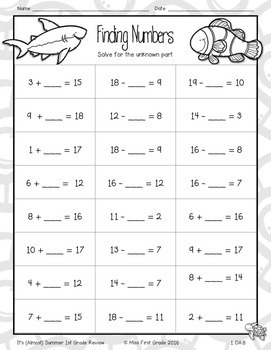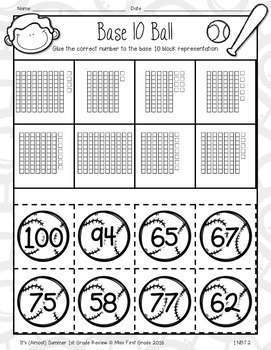End of Year Review: First Grade Math Bundle
- Zip
What educators are saying
Products in this Bundle (4)
Description
This bundled packet includes 86 worksheets targeting every Common Core Math standard for first grade. It contains every worksheet from my separate “It’s (Almost) Summer” review packets.
For back to school first grade math, click here.
These are intended to review target skills for first grade and can be used as independent work, homework, or even assessments. Use at the end of first grade, for summer work, or at the beginning of the year in second grade for review.
With a summery, beachy theme and zero prep, it will keep your stress level low and keep your students meaningfully engaged.
Enjoy the last few weeks with your students!
Skills covered include:
- True/False Equations
- Adding 3 Numbers
- Missing Addend Addition
- Number Bonds
- Basic Addition & Subtraction Practice
- Word Problems
- Number Lines
- Counting
- Ordering Numbers
- Number Words
- 100s Board Skills
- Adding & Subtracting Multiples of 10
- Composing Numbers (tens and ones)
- Comparing Numbers (includes different # representations)
- Adding 2 digit and 1 digit numbers
- Place Value Word Problems
- 10 More/10 Less
- Time to the hour
- Time to the half hour
- Nonstandard measurement
- Measurement story problems
- Transitivity principle problems
- Graphing
- Surveys for data collection
- Shape Attributes (2D & 3D)
- Shape Identification
- Shape Graphing
- Composing Shapes
- Partitioning Word Problems
- Fractions (wholes, halves, fourths) with rectangles and circles
Follow me for updates on new products, freebies, and discounts! Click the green star under my picture & "Made by Primary Pearls" near the top of the page. For paid products, don't forget to leave feedback for TPT credits!
Keywords: end of the year, first grade, beginning of the year, second grade, math, addition, subtraction, geometry, graphing, measurement and data, common core math, primary grades math, bundle, math worksheets, math printables





